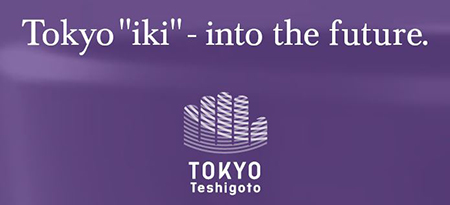Edo Kimekomi Ningyo
(Wood and Cloth Dolls)

- From parents Eperspective, that is not a simple toy, but an irreplaceable charm.
- In Japan, there is a unique tradition in which parents present dolls to pray for their children’s growth and health. doll manufacturing is classified mainly into cloth-wearing type and Kimekomi (posting) type. The KimekomiNingyo (posted material doll)making method, originally developed in 18th century Kyoto, uses a Japan-specific technique of making grooves on the figure’s base and attaching fabrics to them. Natural dressed-doll postures are created using this specific method called Kimekomi. Whereas in other countries dolls are regarded basically as toys, we in Japan believe that spirits reside in dolls. A doll is seen as a kind of charm given to children to keep them pure and safe. Accordingly, craftsmen painstakingly seek out tough, shape-retaining materials and appropriate methods in order to imbue the dolls with the parents Ewishes for the growth and development of their children. Edo KimekomiNingyo garments reproduce the style of noble court dress in the 8th through 12th centuries, and Kimono miniatures are highly prized by doll collectors around the world. Its reliable skillsof high-level invite order store pair KimekomiNingyo. Today, those craftsmen also produce, accessories, and miscellaneous items to promote the unique character and cultural background of these dolls to the world.
| Main Areas of Manufacture | Taito Ward, Sumida Ward, Arakawa Ward |
|---|---|
| Designation/ Certification Date | February 6th, 1978 (National Certification) December 24th, 1982 (Tokyo Certification) |
| Traditionally Used Raw Materials | The sawdust used in toso comes from the paulownia tree. The bisque baked for doll heads is either hakuundo*1 clay, or clay of a similar quality. Dolls are dressed either in silk fabrics, or materials of a similar quality. The thread used for doll hair is silk. *1 Hakuundo: Is a type of clay rich in dolomite. |
Traditional Technologies and Techniques
- The base material used to create the bodies of Edo Kimekomi Ningyo (wood and cloth dolls) is called toso. This is a resin compound that contains sawdust from the paulownia tree and other substances. When making dolls, the doll bodies receive five or more lacquer coats after grooves have been cut in them.
- The bodies of dolls are dressed with cloth after paste has been applied to the grooves. When this is done, the edges of the cloth are precisely tucked into the grooves.
- Facial features are painted using special fine-tipped brushes. The eyes are painted, the brows and hair outlined, and the lips then added.
- After hair made of fine silk threads has been arranged by comb, it is then transplanted to the heads of the dolls.
History and Characteristics
Kimekomi Ningyo (wood and cloth dolls) are said to have been born in Kyoto approximately 250 years ago during the Genbun Era (1736-1741). There was a priest by the name of Horikawa at the Kamigamo Shrine, as well as Tadashige Takahashi, a man in the employ of the priest's family. Between jobs, Takahashi amused himself by creating dolls from willow offcuts that were leftover from the manufacture of shrine festival accouterments. These he clothed in fabric scraps from priestly robes. These scraps were tucked into slits carved into the bodies of the dolls.
In that such dolls used willow from the banks of the Kamo River, they came to be known as "Yanagi Ningyo" (Willow Dolls), "Kamo Ningyo" (Kamo Dolls) and "Kamogawa Ningyo" (Kamogawa Dolls), etc. It is said these dolls represent the beginnings of the modern Kimekomi Ningyo.
Concerning the "Kimekomi" name, it was born from the practice of carving small grooves into which cloth was tucked. These might be used to create a crease effect or to tuck away cloth edges. Regarding the manner in which "Kimekomi" is written in kanji characters, the implication of the characters used is "to tuck precisely." It means that tucking is done precisely so that dolls present with very smooth dress lines.
Compared to dolls dressed separately (with separate articles of clothing), and whose bodies are created from straw or wood, etc., the basic shape (body) of a Kimekomi Ningyo is made of toso, which is a resin comprised of paulownia sawdust to which has been added an adhesive stiffener. The cloth fabric is pushed snugly into the body of the doll to give it its completed finish. This is another reason for the Kimekomi name, in that a literal translation of "Kimekomi" is the "act of pushing something into slits that have been cut in wood."
A single piece of cloth is used to dress Kimekomi Ningyo. Thus, in that the body lies directly beneath a single layer of cloth, it is said that body-shaping represents a key production process, it defining the Kimekomi Ningyo style.
Compared to the Kimekomi Ningyo produced in Kyoto which are known for their regal bearing in terms of the manner in which the face is depicted, those produced in Tokyo tend to be typified by somewhat narrower faces and more clearly defined eyes and noses.
Contact Details
| Manufacturing Area Cooperative Name | Tokyo Hina Doll Manufacturing Association |
|---|---|
| Address | Tosho Center Bldg. 4F, 2-1-9 Yanagibashi, Taito Ward, Tokyo 111-0052 |
| TEL | 03-3861-3950 |






